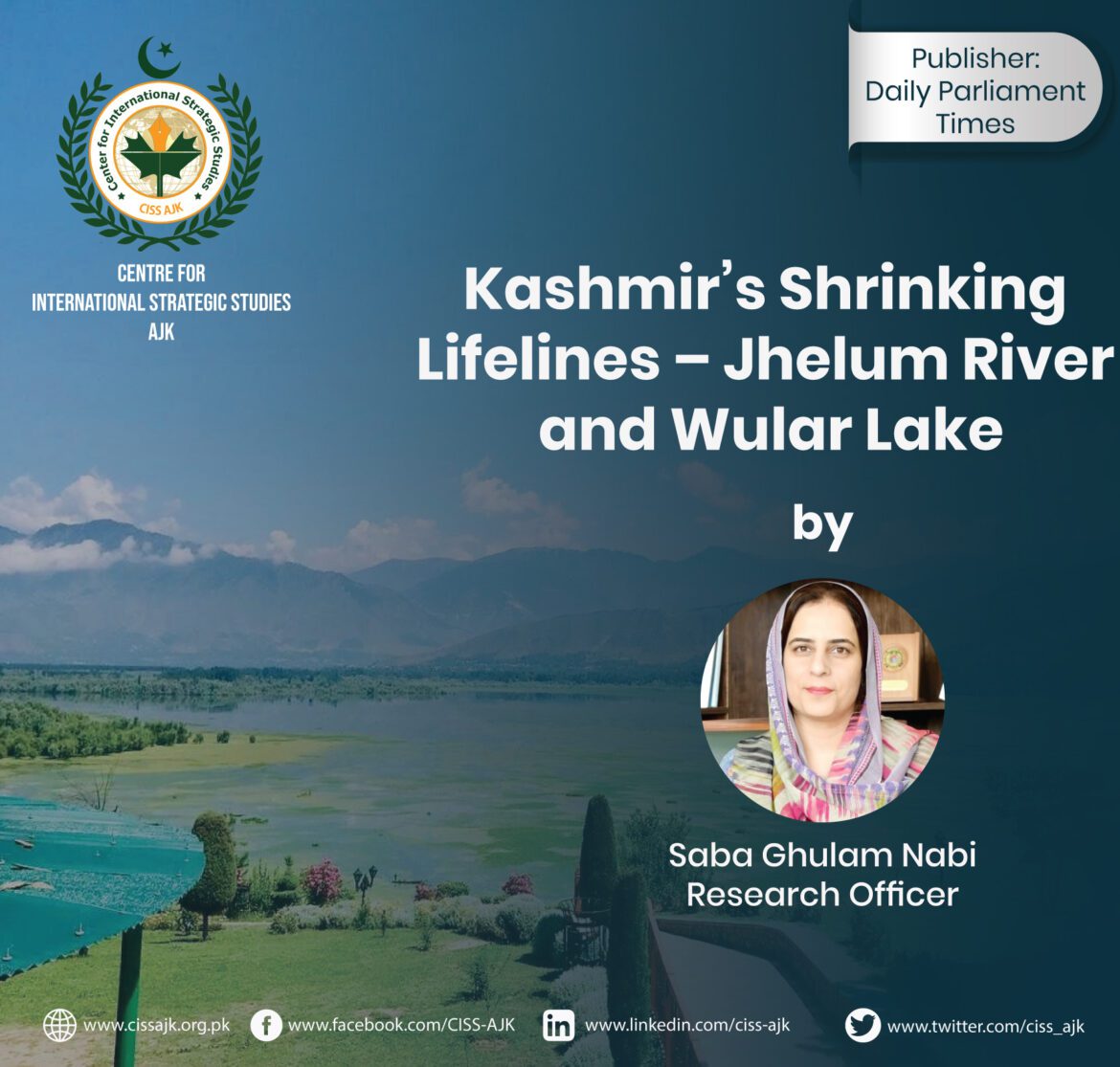704
Climate change has significantly altered our security concerns in recent years. Countries that were previously focused on traditional security measures are now paying more attention to the to threat posed by climate change. In this regard, the region of Jammu and Kashmir has gained importance, despite its significant relation to the traditional security – the region is bone of contention between India and Pakistan and known as nuclear flashpoint between the two South Asian neighbors. Kashmir has now transitioned from being primarily seen as a traditional security threat to now being considered a flashpoint for non-traditional security challenges. The third pole, known as the HKH (Hindu Kush, Karakoram, Himalaya), located to the north of the state of Jammu and Kashmir, once acted as a “natural defense line” protecting Kashmir from invaders from Central Asia. However, it has now become a “line of devastation”. Kashmir’s water resources, including its glaciers, lakes, rivers, and waterfalls, are vital not only for meeting water requirements but also for sustaining livelihoods through activities such as tourism and hydropower generation. Unfortunately, these resources are depleting at an alarming rate, leading to severe water scarcity that will become a significant challenge in the future for both India and Pakistan. The rapid melting of glaciers in this region poses a serious threat to maintaining adequate water levels to meet the needs of the people in South Asia. According to Mr. M.N. Kaul, out of 15,000 glaciers, 6,500 are in the Himalayan Range. And out of which 3,136 are in Kashmir and Ladakh Region. The rapid melting of these glaciers poses a serious threat to the ecosystem. In a report of the metrology department, the nose of Kolahoi Glacier has melted 22 meters in the last 20 years. The River Jhelum, which has historically been the lifeline of the region, is experiencing a significant reduction in its water flow. This reduction is attributed to the changing climate patterns, including irregular rainfall and the melting of glaciers in the Himalayan region. The river, once a robust source of freshwater for both domestic and agricultural purposes, is now struggling to meet the demands of the growing population. This decline in water availability will not only result in water scarcity but will also have negative impacts for agriculture, which is the primary occupation of the region’s inhabitants. Similarly, the Wular Lake, often referred to as the “jewel in the crown” of Kashmir, is shrinking at an alarming rate. This vast, serene lake, known for its rich biodiversity and scenic beauty, is crucial for maintaining the delicate ecosystem of the region. Three decades ago, the area of Wular Lake was 157 sq kms and now it is 86 sq kms. The decline in the lake’s size is attributed to the sedimentation and encroachment of its waters, primarily due to unregulated human activities. Wetlands that once provided a habitat for various species of birds and fish are now disappearing. Furthermore, the diminishing size of Wular Lake is increasing the risk of floods in nearby areas, a problem that has become more common and severe in recent years. The consequences of the shrinking of River Jhelum and Wular Lake extend beyond ecological concerns. The livelihoods of the local population, heavily dependent on agriculture, fisheries, and tourism, are at great risk. The agricultural sector, which forms the backbone of the region’s economy, is facing difficulties due to less water for irrigation. The declineof fish is also impacting the income of fishermen who rely on the lake for their sustenance. Additionally, the tourism industry, which once flourished thanks to the natural beauty of the region, is suffering as the beauty of the area diminishes with the shrinking of these important water bodies. To address these pressing problems, concerted efforts are required. However, the policies of India are making the problem worse, adding fuel to the fire. It also that India appears to overlook the impending risks: on-going human activities in glacier areas, such as the presence of the army in Siachen and mining operations in Ladakh, have had severely harmful effects on the environment.Unregulated tourism and deforestation contribute further to this environmental crisis. India’s approach to Kashmir differs from its treatment of other of its states, seemingly unaware that climate change knows no boundaries. In Uttarakhand, the government has implemented restrictions, limiting the number of tourists to 250 per day at sacred pilgrimage sites like Gangotri and Gaumukh. In contrast, in Kashmir, the number of pilgrims allowed to visit Amarnath per day ranges from 20,000 to 25,000, even though areas like Sonamarg and Pahalgam are ecologically fragile. To tackle the current environmental challenge, it’s vital for all stakeholders to come together and take effective steps to prevent the situation from getting worse. While humans can control nuclear weapons, preventing a major environmental disaster is beyond our control. So taking right action at the right time is vital, before it gets too late.



